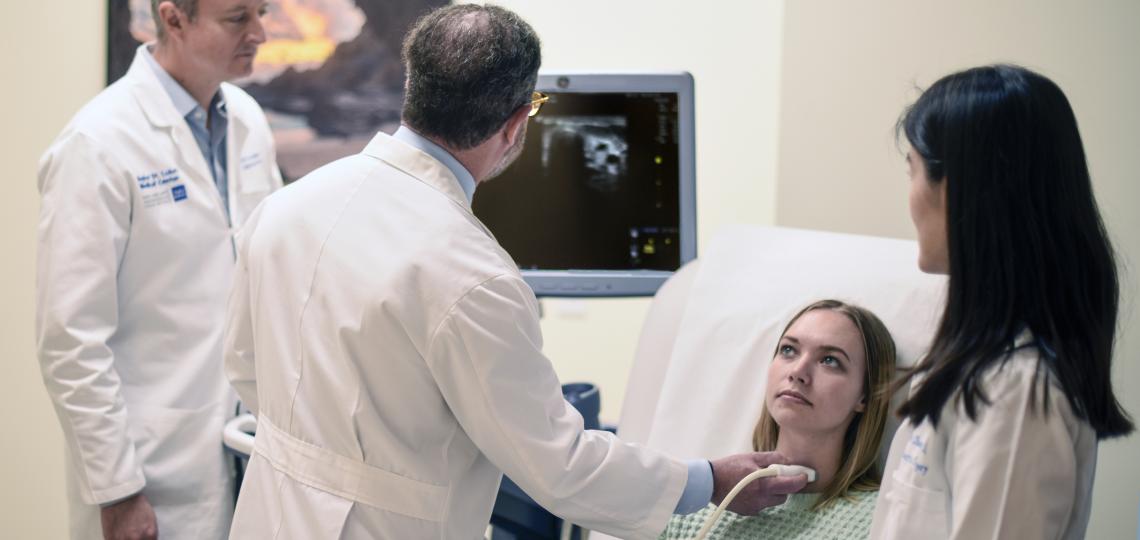Results of the thyroid biopsy are given as one of six possible diagnoses, according to the Bethesda System for Reporting Thyroid Cytopathology. Please note that the percentages below may be somewhat different at different institutions and centers.
Benign – This accounts for up to 70% of biopsies when using the Bethesda System (one of the most common ways that cyto-pathologists classify nodule biopsy specimens). The risk of malignancy in this group is typically less than 3%. These nodules are generally monitored with a follow up ultrasound within 12-18 months and if needed, periodically after that.
Malignant (cancer) – This account for 3-7% of all biopsy specimens. The most common type of thyroid cancer seen in these biopsies is papillary thyroid cancer. When a biopsy comes back as malignant, there is a 97- 99% chance that it is truly a cancerous lesion. Almost all of these nodules will go to surgery (thyroidectomy).
Suspicious for malignancy – When a biopsy result returns as suspicious for malignancy, there is a 60-75% chance of cancer. The cyto-pathologist will see features that are worrisome, but not diagnostic of cancer. The treatment is typically surgery.
Atypia of Undetermined Significance (AUS) or Follicular Lesion of Undetermined Significance (FLUS) – This category alternatively is called “indeterminate.” These specimens have some features that are worrisome and some features that look more benign. This diagnosis carries a 5-15% risk of malignancy, although there is some variability among institutions. A repeat biopsy and/or genetic testing may be useful in these cases.
Follicular Neoplasm or ‘Suspicious for follicular neoplasm’ – This category alternatively may be called “indeterminate” as well. This category carries a 15-30% risk of malignancy. It is difficult to tell if these nodules are benign or malignant unless taken out. Genetic testing may be useful in these cases. When needed, surgery removing half of the thyroid (the side with the nodule) is performed for diagnosis and treatment.
Non-diagnostic – This means that there are not enough cells in the sample to make a diagnosis. Despite our best efforts and even when we can see that the needle was in the nodule during the biopsy, the specimen sometimes does not have enough thyroid follicular cells to make a proper diagnosis. Non-diagnostic samples can also occur when only cyst fluid is taken out, and for other reasons, such as the presence of too much blood. In these cases, the biopsy should be repeated, and if non-diagnostic a second time, consideration is given to a third biopsy, monitoring, or surgery.









